Charlevoix in northwest Michigan is located on three lakes. So water plays a major role in Charlevoix. Sandy beaches, promenades, harbor basins with sailboats, a canal with a lift bridge, fishmongers and a bright red lighthouse provide a lush maritime backdrop. Small boutiques, cafés and restaurants complete the picture and make Charlevoix a popular vacation resort on Lake Michigan.

Charlexoix is 80 kilometers north of Traverse City. Another 80 kilometers north is Mighty Mac, the iconic bridge over to Michigan’s Upper Peninsula. Anyone traveling through Michigan by car and heading north should make a stop in Charlevoix. The city confidently calls itself The Beautiful. Even if beauty is in the eye of the beholder, one thing can be said without a doubt about Charlevoix: this place is rich as a rock. And for two reasons.
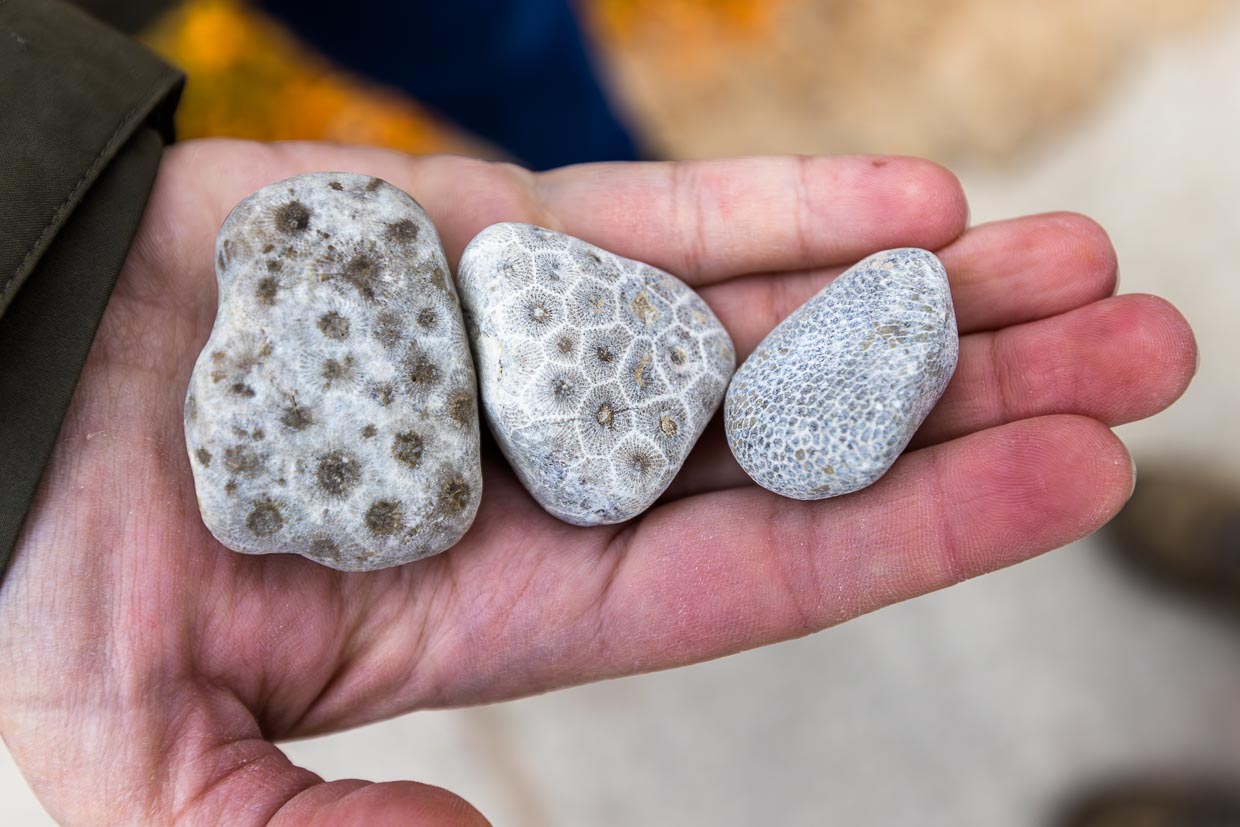
Petoskey stones on the beach of Charlevoix
If there were heraldic stones, the Petoskey Stone would probably be the heraldic stone of Michigan. This stone with its striking hektagonal pattern can be found on Charlevoix beach. The Petoskey stone is a calcareous sandstone with deposits of fossilized coral on its surface. The pattern is particularly recognizable when the stone is wet and the exoskeleton chambers of the coral become visible. The Petoskey stones were first found in Petoskey, just 17 kilometers from Charlevoix. Less well known is the Charlevoix stone, whose honeycomb pattern is smaller.
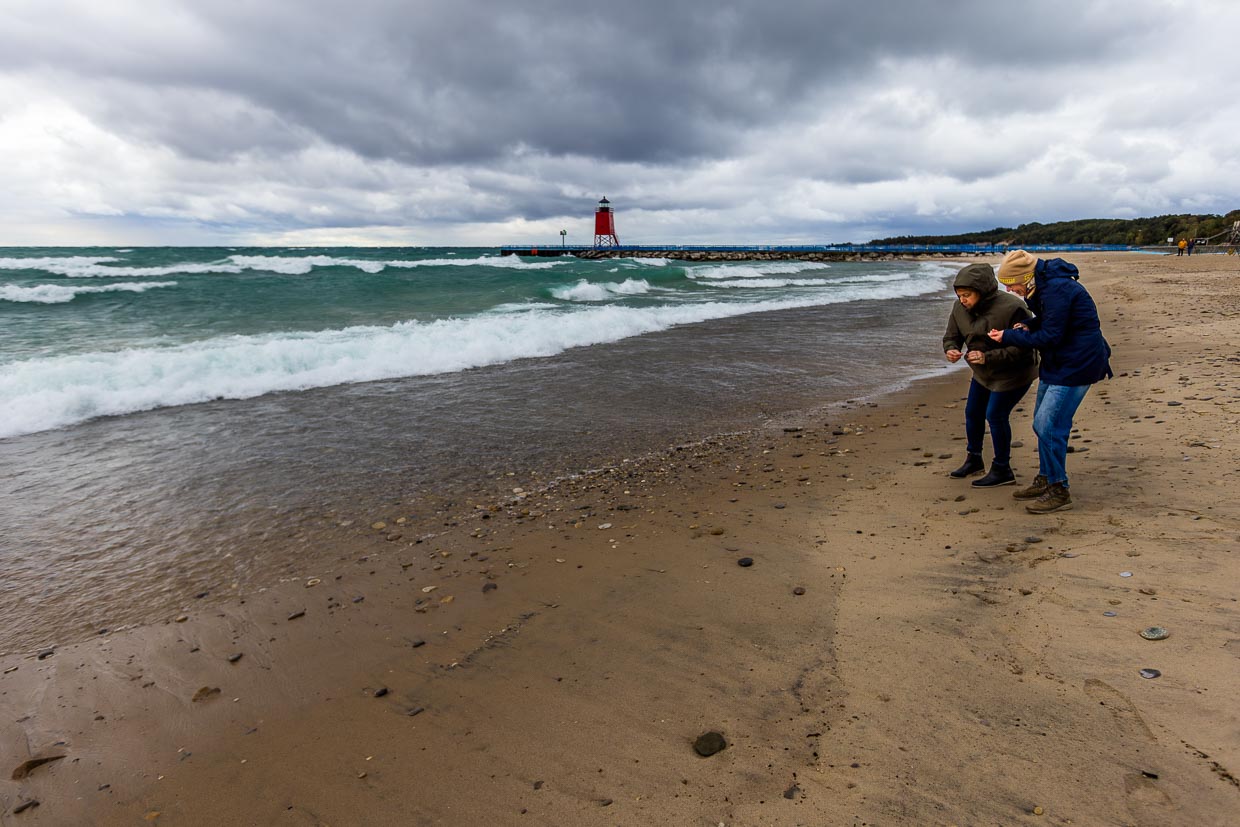
The Petoskey Stones are estimated to be 350 million years old. After stormy days with high waves, the chance of finding beautiful specimens is particularly high. The stones can be found along the coast from Leelanau and Old Mission Peninsula to Petoskey. To make the honeycomb structure more visible, the stones are polished with fine sandpaper. If you don’t have any luck on the beach, you can also go to a souvenir store, where polished stones are available from five dollars. So it’s worth looking for them.
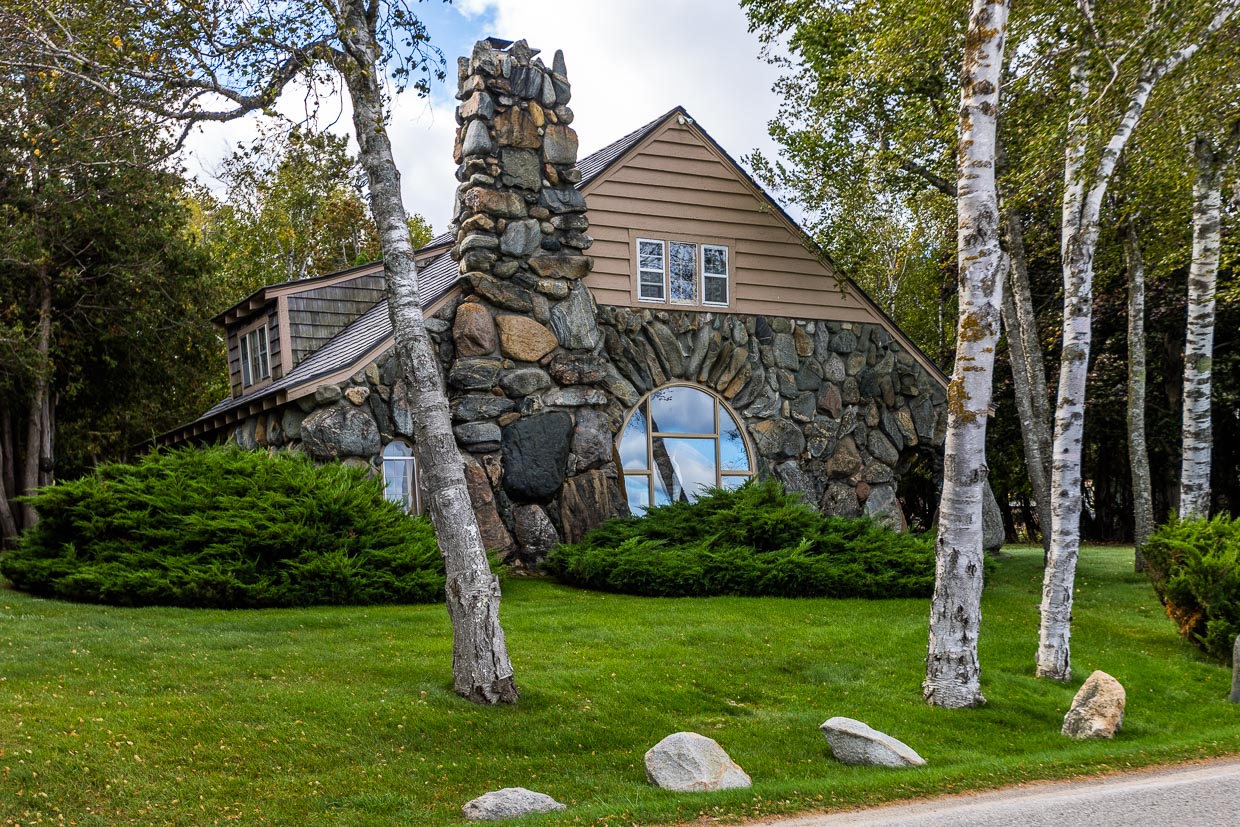
The stone houses of Earl A. Young
Earl A. Young is probably Charlevoix’s best-known personality. It is no exaggeration to say that he dedicated his life to stones. However, his passion for collecting was not the small Petoskey stones, but large boulders and rocks. Over a period of 52 years, he designed and built 28 buildings in Charlevoix. Earl Young was not a trained architect. He taught himself how to build with stone. His work as a real estate broker and insurance agent provided the money for his first building projects. In 1919, Young constructed the first stone house. He was fascinated by the natural and rounded shapes of the stones. He mainly used limestone, fieldstone and boulders that he found in northern Michigan.

Master builder in stone
After a year at the University of Michigan’s School of Architecture, Young turned his back on traditional training. He returned to Charlevoix with the idea of transforming his hometown into a fairytale place. His houses are made of stone and wood, with curves and artfully placed natural stone. Even the smallest of his houses were something special. The Great Depression of 1929 thwarted his grand plan for a fairytale town. Nevertheless, Earl A. Young was able to build 25 residential houses and three commercial buildings, including the first motel in the USA. This was enough to make him and his buildings internationally famous.
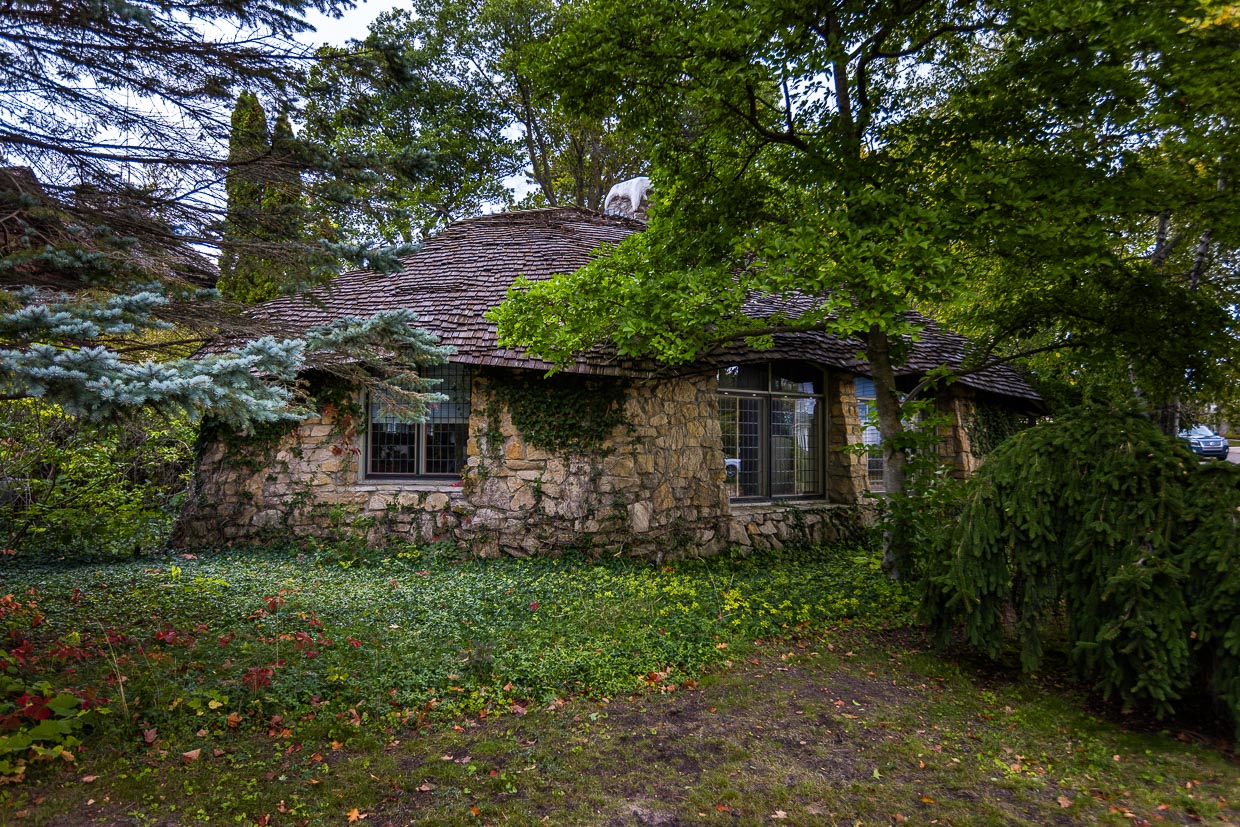
Although he did not study architecture, Earl A. Young in Charlevoix is now known as a master builder in stone. His houses, on the other hand, are referred to as mushroom houses, dwarf houses or even hobbit houses. An inappropriate trivialization that has unfortunately become established. So-called mushroom house tours are offered. What sounds like Disney at first turns out to be an interesting tour through Young’s work.

Most of his houses are located in a development on Lakeshore Drive and Park Avenue in Charlevoix. Visitors can take a golf cart through the streets or book a walking tour. It quickly becomes clear that only a few of the designs actually look like mushrooms. The art of his stonework is particularly evident in the houses with large exterior chimneys and door and window arches made of fieldstone. Young wanted to show that a small stone house could be just as impressive as a castle.
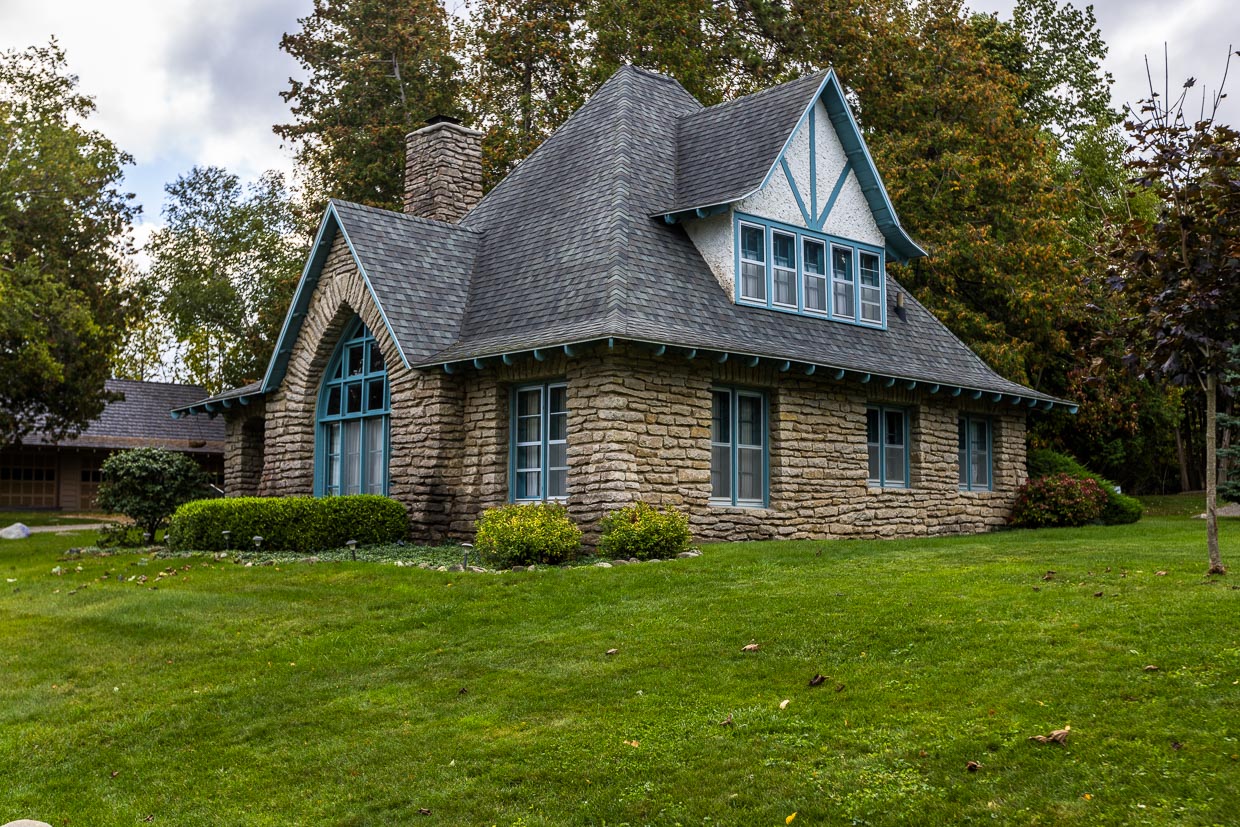
Irene Harsha-Young. Artist, site manager and wife
The old saying ” Behind every successful man is a strong woman ” also applies to the marriage of Earl Young and his wife Irene Harsha-Young. This role model has worked for centuries and is a cornerstone of the patriarchal social structure. The husband takes care of the business and the wife has his back. In the end, his name is written in the history books, while the woman remains unmentioned. In Charlevoix, however, Irene Harsha-Young is also given a stage. Her contribution to her husband’s work is recognized. Her name appears in brochures and advertisements and her artistic sketches are exhibited in the Harsha House Museum.
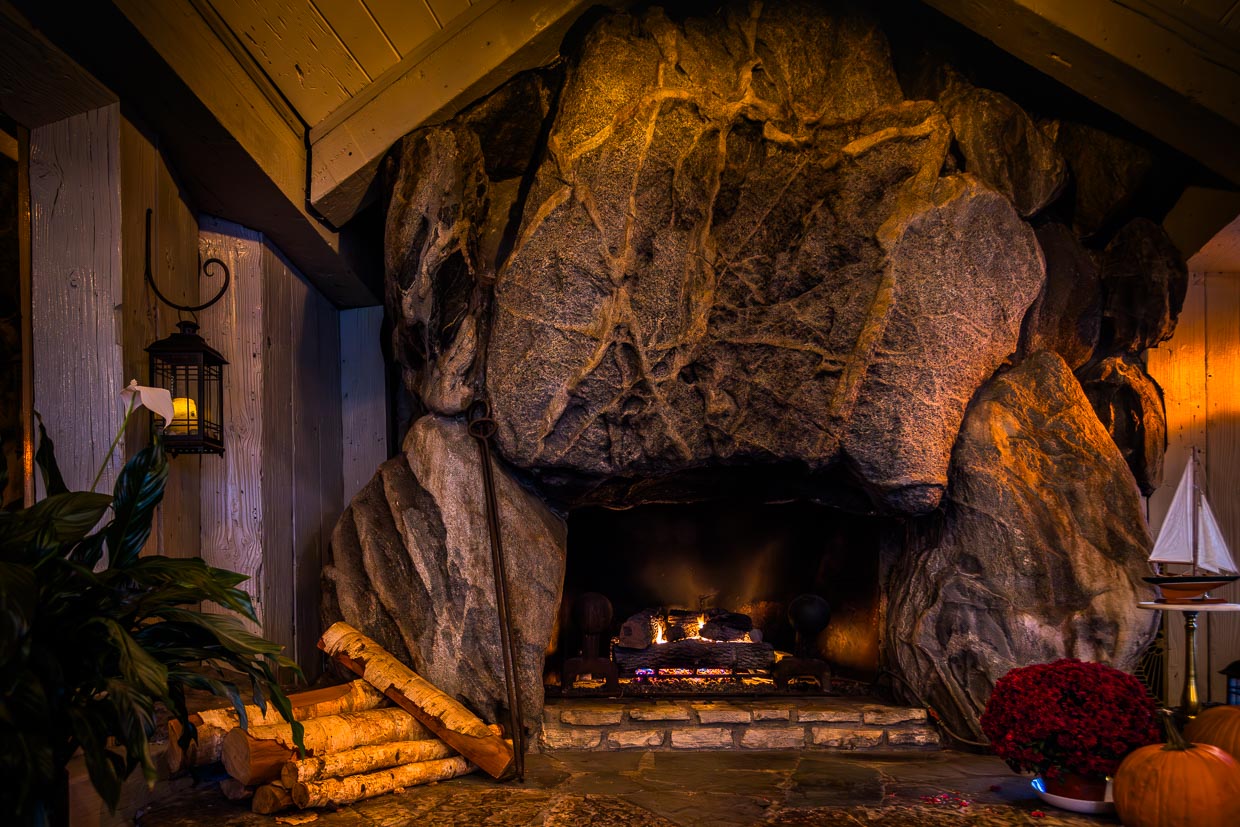
As a former student at the Art Institute of Chicago and successful artist, Irene Harsha-Young knew how to translate her husband’s ideas into drawings. Earl Young completely lacked this talent. It was she who gave form and structure to his ideas, which were often described as crazy. Without her sketches, people in Charlevoix are certain that the builders would not have been able to realize the highly individual stone houses.
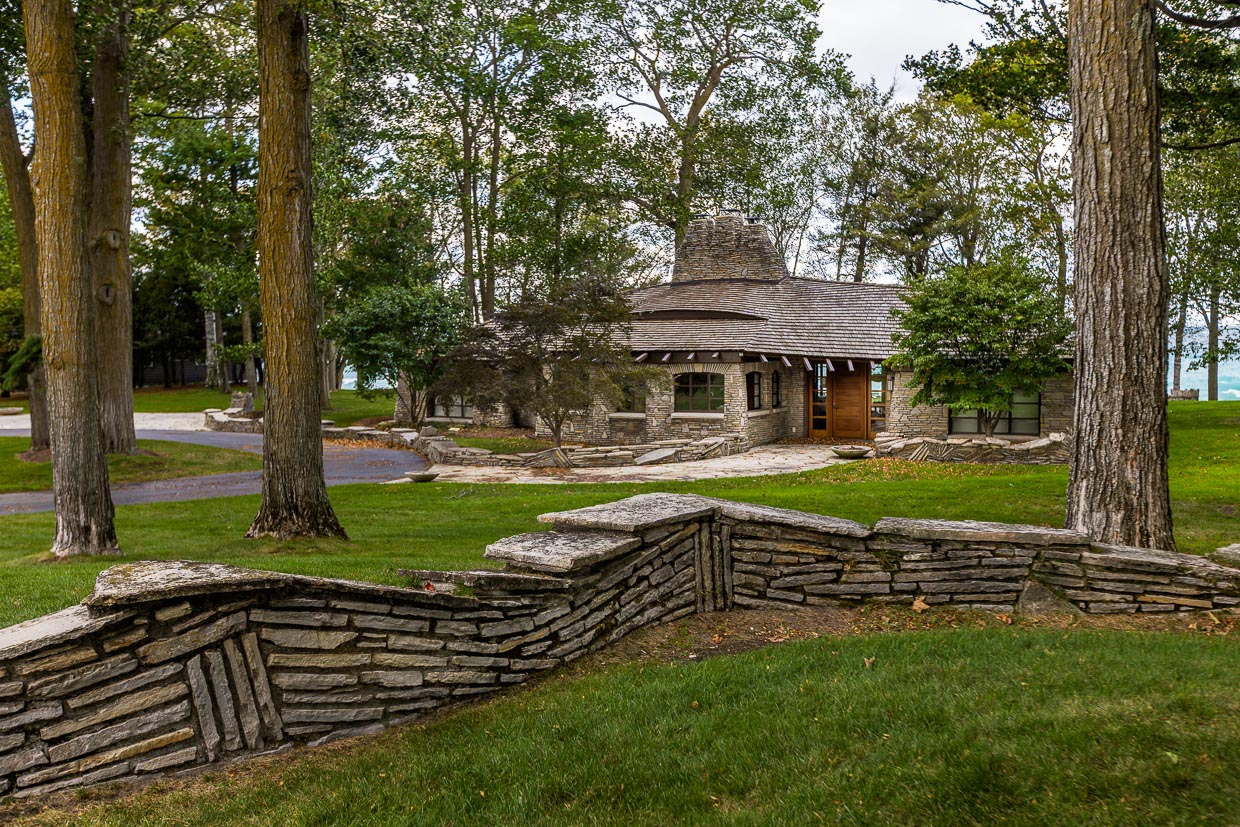
Weathervane Terrace Inn & Suites
Travelers can also stay or dine in a real Earl Young house. The Weathervane Terrace Inn & Suites was the first motel in the USA and Stafford’s Weathervane Terrace is a popular restaurant in the town. The 25 homes, on the other hand, are privately owned. Some are marketed as vacation homes. Irene and Earl Young’s family no longer own any of the houses of their creative ancestors. But the guided mushroom tours end at Irene Harsha-Young’s childhood home, which is now the town museum.

More about Michigan
Our journey through Michigan starts in the capital Detroit with classics and new attractions of a city in transition. The huge Michigan Central station, once a ruined line, celebrated its comeback as a research location for mobility in 2023. However, the options for getting around Detroit have long been extremely diverse, as mobility in Motown works pretty well even without a car. The journey continues to Traverse City on Lake Michigan with the Sleeping Bear Dunes National Park. Mission Point Lighthouse is one of these lighthouses with a history. Why the lighthouse in Grand Traverse County is particularly popular with women is explained in the story about Sarah Lane and the keeper program. We continue on to Charlevoix. The town has a maritime flair and lots of stones. There are Petoskey stones on the beach and Earl Young’s famous stone houses in the town. USA without cars? A fact on Mackinac Island. The success story of Michigan’s heavy industry began with a defeat.
The research was supported by Visit Charlevoix and Pure Michigan

